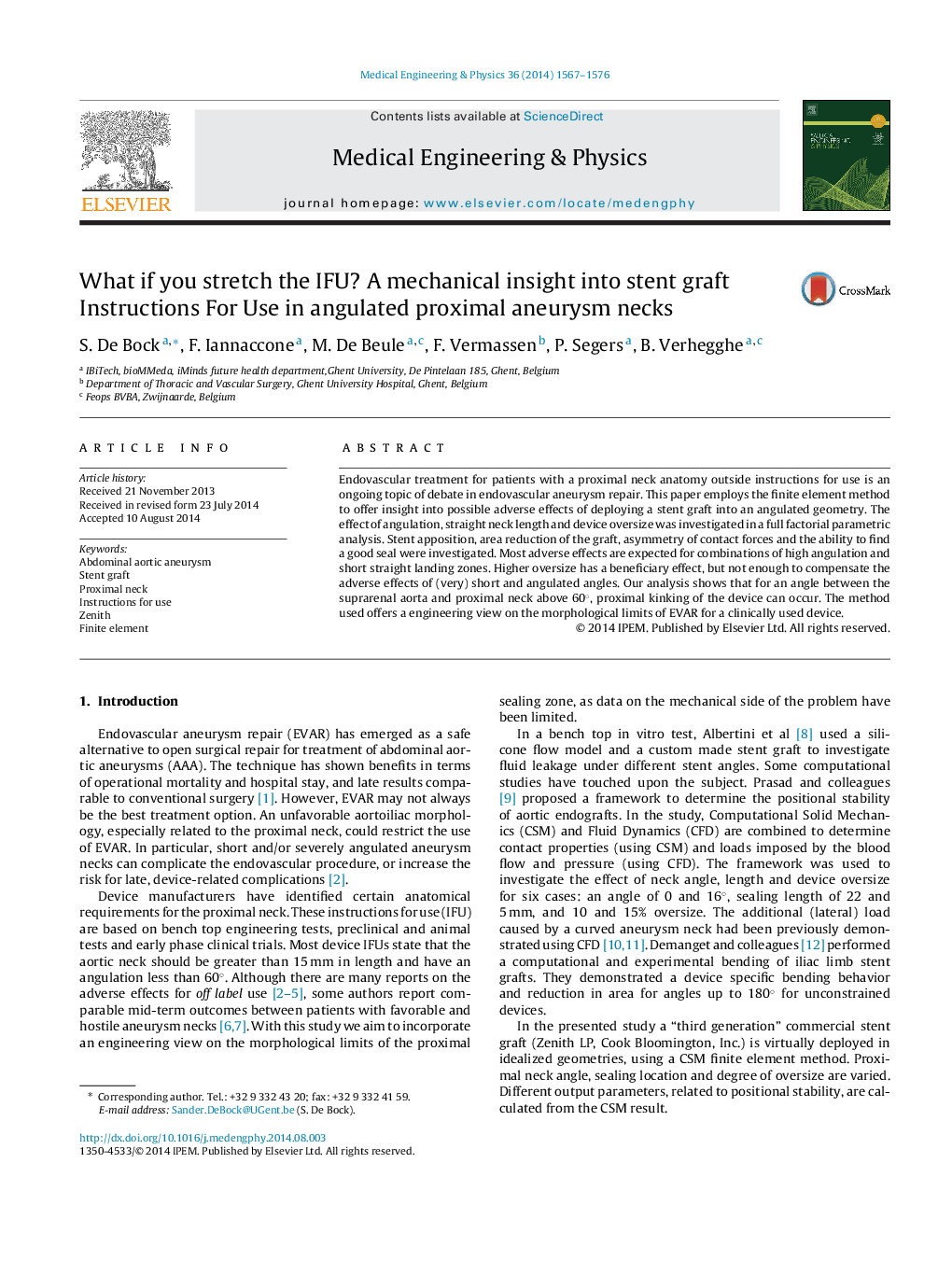| Article ID | Journal | Published Year | Pages | File Type |
|---|---|---|---|---|
| 875827 | Medical Engineering & Physics | 2014 | 10 Pages |
Endovascular treatment for patients with a proximal neck anatomy outside instructions for use is an ongoing topic of debate in endovascular aneurysm repair. This paper employs the finite element method to offer insight into possible adverse effects of deploying a stent graft into an angulated geometry. The effect of angulation, straight neck length and device oversize was investigated in a full factorial parametric analysis. Stent apposition, area reduction of the graft, asymmetry of contact forces and the ability to find a good seal were investigated. Most adverse effects are expected for combinations of high angulation and short straight landing zones. Higher oversize has a beneficiary effect, but not enough to compensate the adverse effects of (very) short and angulated angles. Our analysis shows that for an angle between the suprarenal aorta and proximal neck above 60°, proximal kinking of the device can occur. The method used offers a engineering view on the morphological limits of EVAR for a clinically used device.
